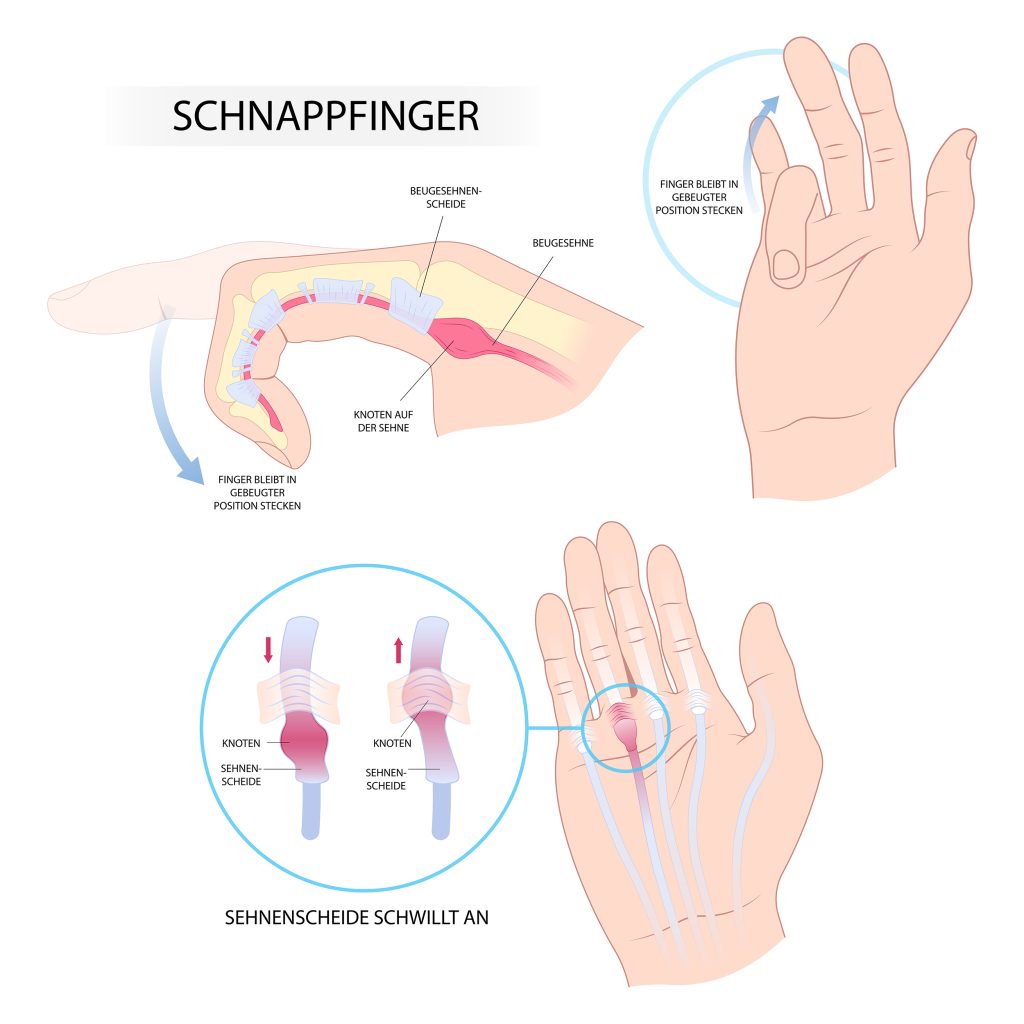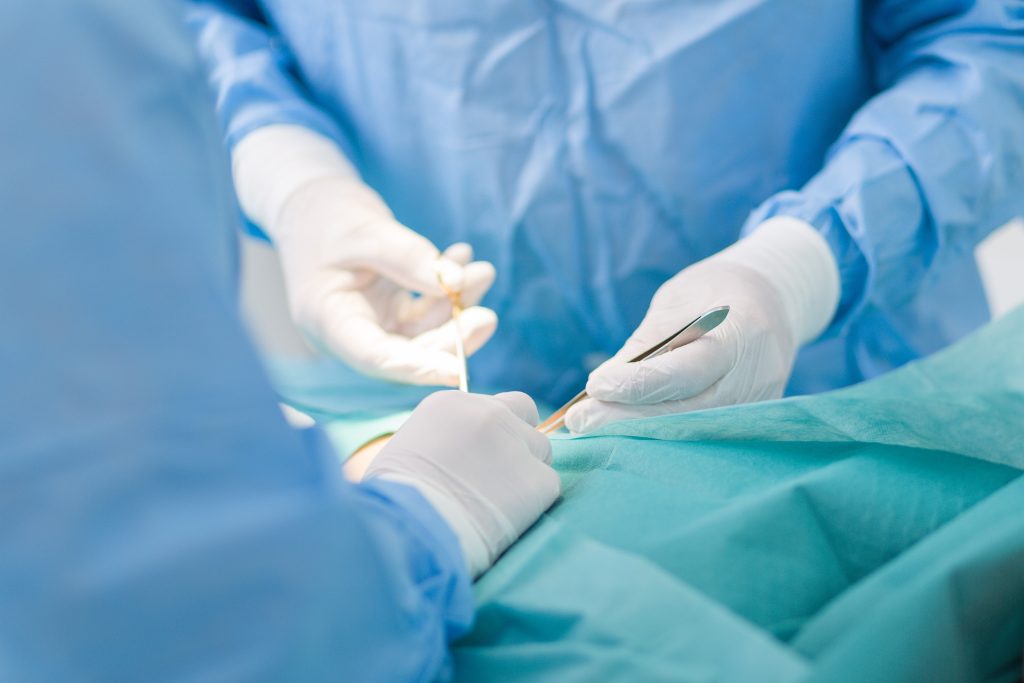Snapping finger
Causes, symptoms and treatment
Suddenly the finger locks, can only be moved jerkily or gets stuck in a bent position – a fast finger can severely restrict everyday life. But what is actually behind this phenomenon? Find out why this unpleasant restriction of movement occurs, what the typical symptoms are and what treatment options are available – from simple exercises to targeted surgery.

What is a fast finger?
A snapping finger, also known as trigger finger, is a condition that can impair hand function. It is caused by a narrowing of the tendon in the area of the annular ligament – a part of the tendon sheath – which means that the finger flexor tendons can no longer glide smoothly. The thumb and ring finger are particularly frequently affected.
Causes of a fast moving finger
The main cause of a fasting finger is a thickening or inflammation of the flexor tendons in the area of the annular ligament. Factors such as repetitive strain, tendonitis or degenerative changes can increase the risk. In some cases, the cause lies in systemic diseases such as rheumatism or diabetes.

Symptoms of the trigger finger
The typical symptoms of a fast finger include
- Pain in the palm of the hand - Pain occurs particularly in the area of the ring ligaments, which can increase with movement.
- Blocked finger position - The affected finger can temporarily remain in a bent position and can only be extended again with a jerk.
- Snapping or cracking - A noticeable or audible snap occurs when the finger is flexed or extended.
- Thickening in the area of the annular ligament - A palpable thickening in the palm of the hand may indicate an inflamed tendon.
- Restricted hand function - The mobility and gripping strength of the hand can be significantly impaired by the symptoms.
Diagnostics
- Medical history and clinical examination - the patient is asked about their symptoms and whether typical symptoms such as snapping or restricted movement are present Physical examination and testing of hand function
- Palpation findings - A thickening in the area of the flexor tendons or the annular ligament can be felt.
- Movement test - When flexing and extending the finger, you can check whether there is resistance, rubbing or a jerky release.
- Imaging procedures - In some cases, an ultrasound scan or X-ray may be performed to rule out other causes such as bony changes.

Types of treatment - therapy and surgery
Various methods are available for the treatment of a rapid finger.
- Conservative treatment: This includes anti-inflammatory medication, splints for immobilization or injections to alleviate the symptoms.
- Surgical treatment: If conservative methods do not help, surgery may be necessary. This involves cutting the affected annular ligament in a small operation to remove the narrowing. Priv.-Doz. Dr. Farr performs this operation at the Vienna Private Clinic in order to guarantee patients the best possible care.

Exercises for relief
1. gentle bending and stretching
Regular, careful bending and stretching of the fingers helps to improve mobility and loosen adhesions in the tendon sheath.
2. massage the palm of the hand
Light circular movements in the palm of the hand can help to promote blood circulation and relieve tension in the flexor tendon area.
3. strengthening the forearm muscles
Targeted exercises with a soft ball or therapy clay strengthen the finger flexor tendon system and can have a preventative effect.
Your specialist for hand surgery in Vienna - Dr. Sebastian Farr
Priv.-Doz. Dr. Sebastian Farr is a specialist in orthopaedics and hand surgery with many years of experience as a senior physician at the Orthopaedic Hospital Speising. In his practice, he offers comprehensive advice and individual treatment options for diseases and injuries of the hand and upper extremities. From diagnosis to treatment and aftercare, Dr. Farr accompanies his patients personally and attaches great importance to precise diagnostics and targeted treatment. His aim is to restore hand function in the best possible way and alleviate pain in the long term. For further information or to make an appointment at the surgery of Priv.-Doz. Dr. Sebastian Farr in Vienna, you can contact us by telephone, online or by e-mail.

FAQ - frequently asked questions about fast fingers
Who is most affected by a fast moving finger?
A trigger finger is most common in people who perform repetitive stresses or movements of the hand, such as craftsmen, musicians or athletes. People with certain conditions such as diabetes or rheumatoid arthritis also have a higher risk of developing a trigger finger.
How long does it take to heal after an operation?
Most patients can put weight on their hand again immediately or within a few days of the operation. Complete healing usually takes two weeks.
Can a snapping finger disappear by itself?
In some cases, mild symptoms may subside. If the problems persist for a longer period of time or if the pain is severe, treatment by a specialist is advisable.
How can I avoid a fast moving finger?
Regular stretching exercises and avoiding excessive strain on the hand can help to reduce the risk.
What are the risks of an operation?
As with any surgical procedure, there are risks, including infection, scarring or, in rare cases, restricted movement. Dr. Farr discusses these individually with his patients.